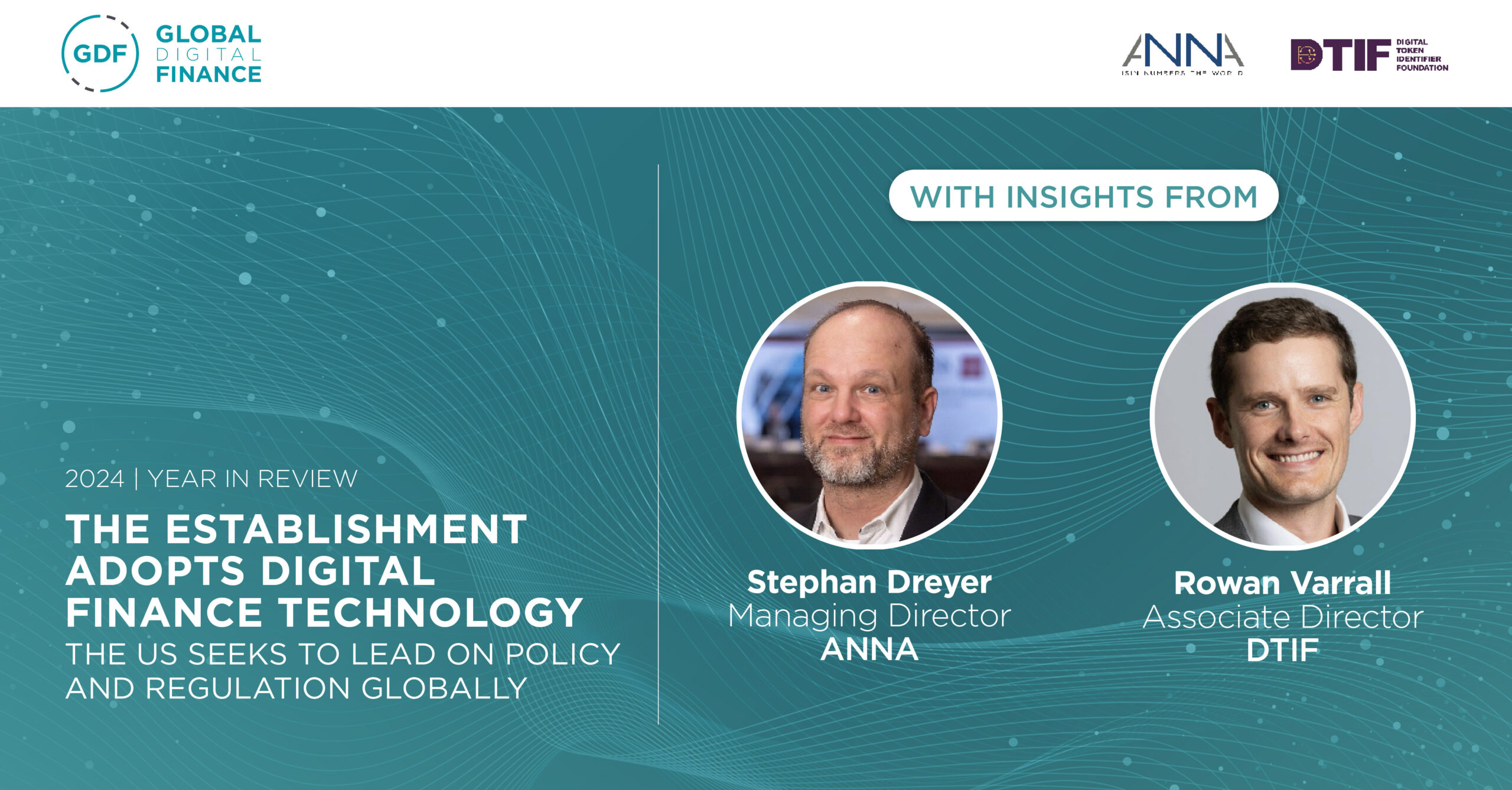First published on TabbFORUM, 25 June 2025. A universal language Consensus-based financial standards developed by…
Q&A with Vipin Y.S Mahabirsingh on the adoption of DLT
Industry Perspectives: Q&A with Vipin Y.S Mahabirsingh, Managing Director, Central Depository & Settlement Co. Ltd (CDS, Mauritius) on the adoption of DLT
Why are digital assets important and relevant for ANNA?
The market capitalisation of cryptocurrencies, the primary digital assets that have become mainstream, currently stands above USD 2 trillion. Although this is relatively small compared to the total market cap of global markets (around USD 117 trillion), cryptocurrencies have become an asset class which has captured the attention of both retail and institutional investors. There are also a number of financial instruments like ETFs and derivatives which have cryptocurrencies as underlying. It is, therefore, important that ISINs are assigned to cryptocurrencies to facilitate the execution and settlement of transactions in instruments that have cryptocurrencies as underlying. At the same time, regulators must have a closer look at the cryptocurrency market to mitigate the risks of money laundering and market manipulation.
The other type of digital assets that are gaining traction are CBDCs. China has already rolled out the digital yuan, and most central banks have launched pilot projects on CBDCs. CBDCs may eventually make cross-border payments more cost-effective, but there is not enough evidence to support this at this stage. CBDCs will also introduce a number of new operational risks that will have to be addressed.
Securities tokens are still nascent as there are no industrial-scale issues of such digital assets as of date, although a number of securities have been issued in the form of tokens on a pilot basis. This type of digital asset is directly relevant to ANNA as they fall under the definition of securities in all relevant jurisdictions. Some markets like Switzerland and Australia have reached an advanced stage in developing market infrastructures to trade and settle securities tokens.
What are the challenges facing the adoption of DLT in financial markets?
With the current market structure, which comprises issuers, exchanges, CSDs, market intermediaries and investors, it is difficult to identify problems existing systems cannot solve more cost-effectively than DLT. For example, some benefits of using blockchain for securities settlement, like having a golden source and addressing reconciliation issues can be achieved by having securities registered at beneficial owner level at the CSD. Similarly, with pre-funding, near real-time settlement can be achieved with existing systems, but investors do not favour this because of asset commitment and other risks. Yet, this is how certain blockchain-based systems are achieving near real-time settlement. The system ensures that the necessary cash and securities are reserved in the smart contract system before transmitting the orders to the trading system. So, at this stage, there is no empirical evidence that establishes that it is more cost-effective to issue and trade securities in tokenized form than in book-entry form.
That being said, DLT has the potential to change the market structure by eliminating some intermediaries between issuers and investors. Some private companies in the venture capital space are already issuing security tokens on blockchain to investors (rather than dematerialized shares) to raise capital, whilst global institutions have issued bonds in the form of tokens on a pilot basis. These security tokens can only be transacted on public or permissioned blockchain-based systems. For these tokens to be issued and traded globally, the DLT systems must be scalable and interoperable, and we are not there yet. There are also cross-jurisdictional legal and regulatory issues that need to be addressed.
What needs to be done for DLT to become mainstream in financial markets, and how can ANNA help?
There needs to be a convergence of interest between the different stakeholders in the securities industry in favour of adopting this technology. We need a coordinated global approach to adoption rather than a piecemeal approach. For this technology to work, there has to be global adoption and global standards, including a legal framework that can span jurisdictions. Moreover, DLT cannot simply supplant legacy technologies: they must coexist with them for years, perhaps decades. In other words, DLT adoption depends on standards that can deliver interoperability not just between DLT networks, but between DLT networks and legacy systems. This is where ANNA and ISIN have a key role to play.
Why is it important for ANNA to collaborate with the Digital Token Identifier Foundation (DTIF)?
The Digital Token Identifier (DTI) is based on the ISO 24165 Standard, and as its name implies it is used to identify digital tokens. The Registration Authority that is responsible for assigning DTIs and maintaining the registry is the DTIF. A key point regarding the DTI is that it operates at the token level only, i.e. it is used to identify only the digital token to which it is assigned, it does not identify the digital token as an asset or the underlying asset that the token represents. Now, this does not meet the requirements of investors or regulators who need to identify the asset and have comprehensive information on the different attributes of the asset that can be verified from a legal perspective. This is why it is critical that digital tokens that have a DTI should also have an ISIN to uniquely identify the asset that the token represents. ANNA and DTIF are working closely together to find cost-effective means for issuing DTIs and ISINs to digital tokens and for linking reference data relating to an asset or instrument that are stored in the registries kept of DTIF and ANNA.
Vipin Y.S Mahabirsingh
Managing Director
Central Depository & Settlement Co. Ltd (CDS, Mauritius)
Get involved: We talk about the importance of laying the foundation for linking #ISINs and #digitalassets in our short video here. To find out more about the future identification of digital assets, contact your local National Numbering Association here.


